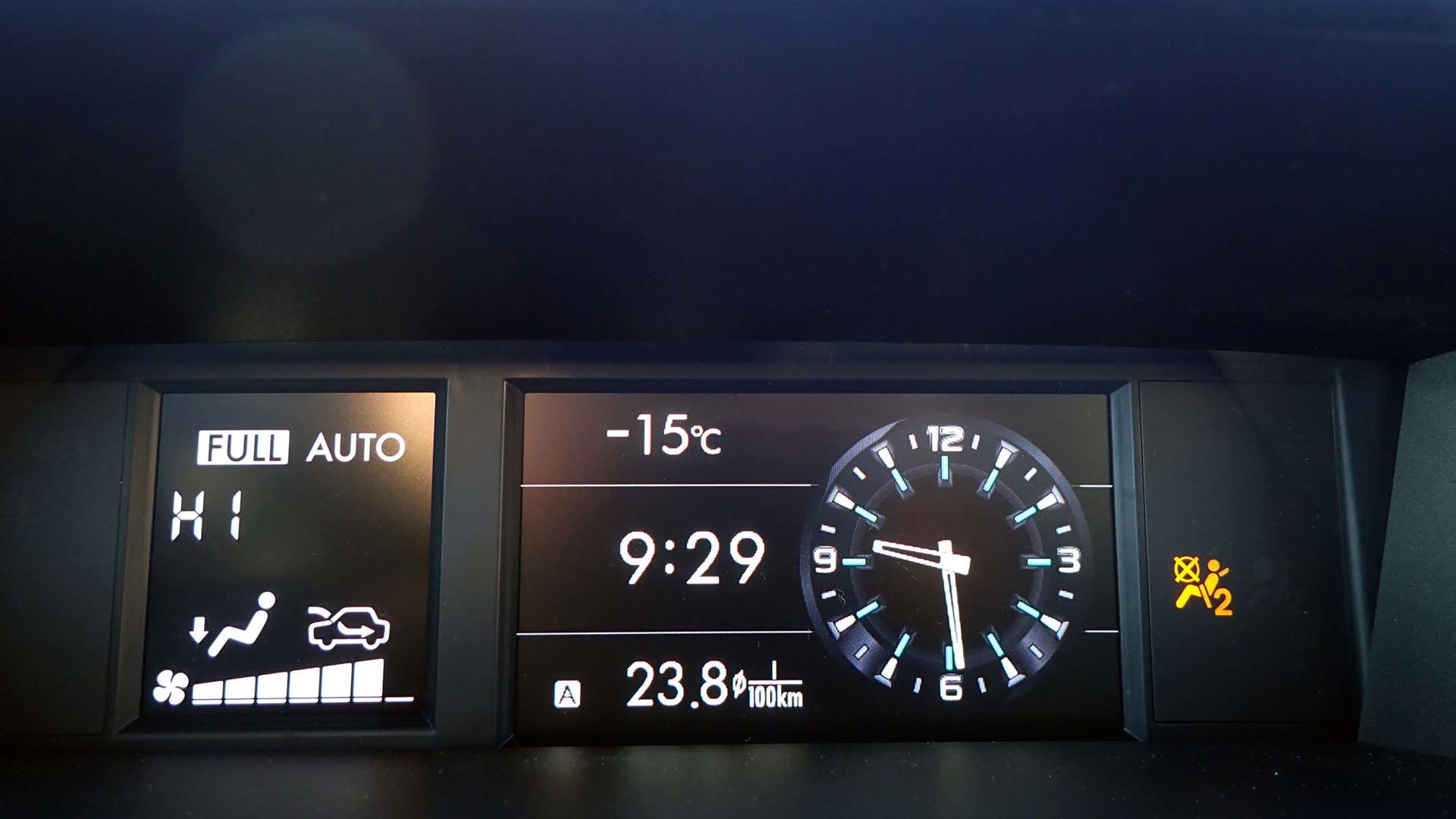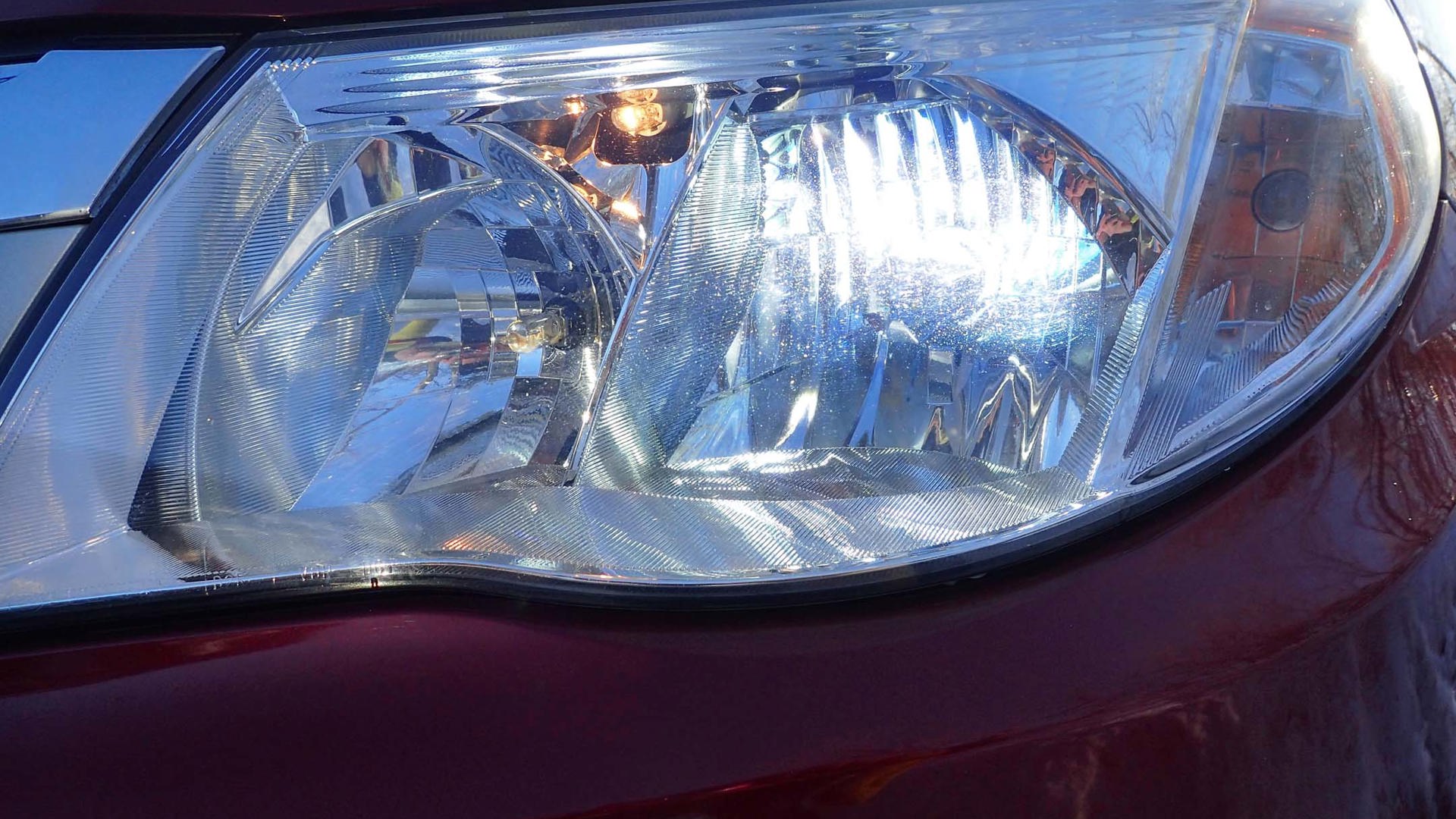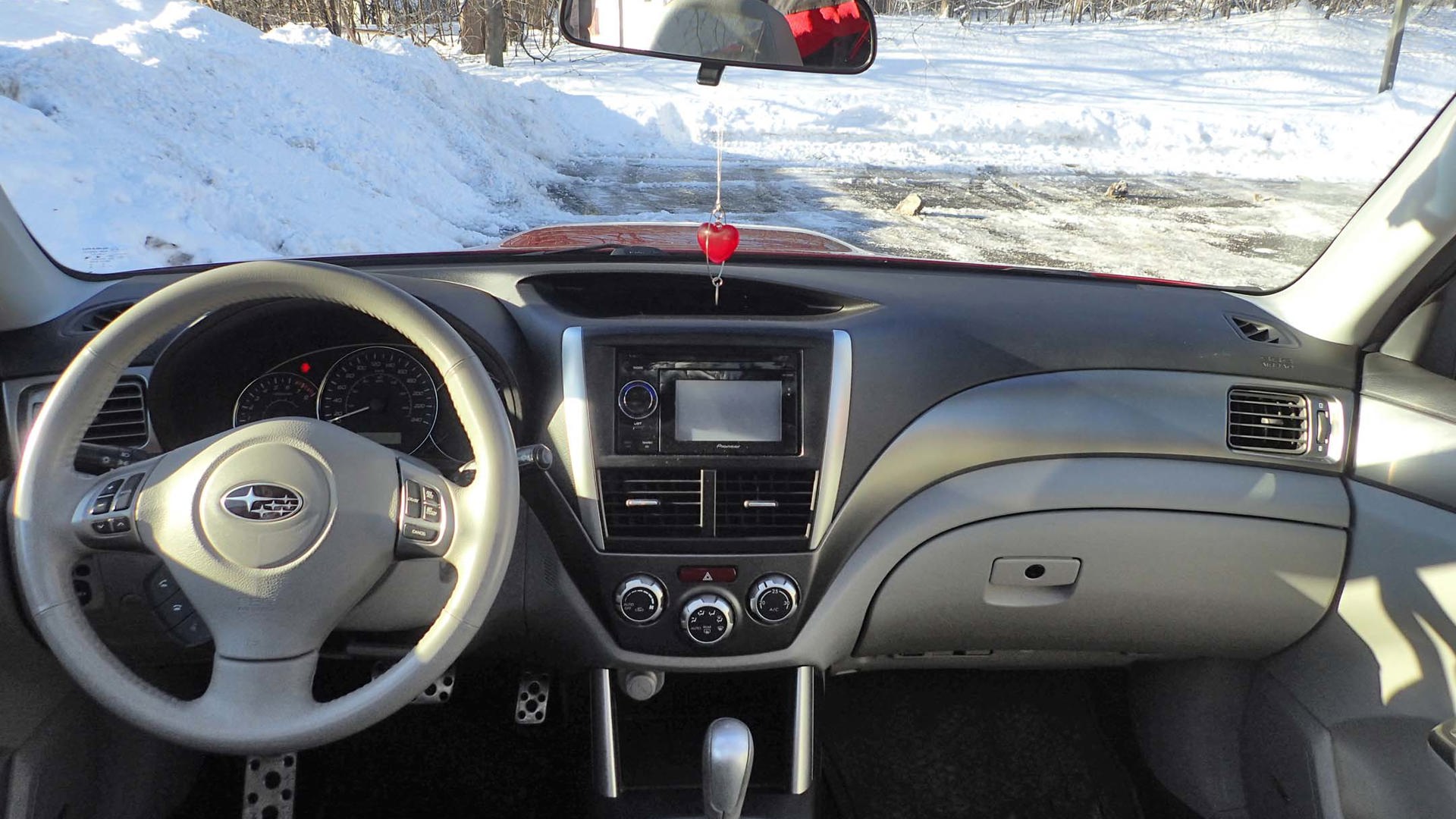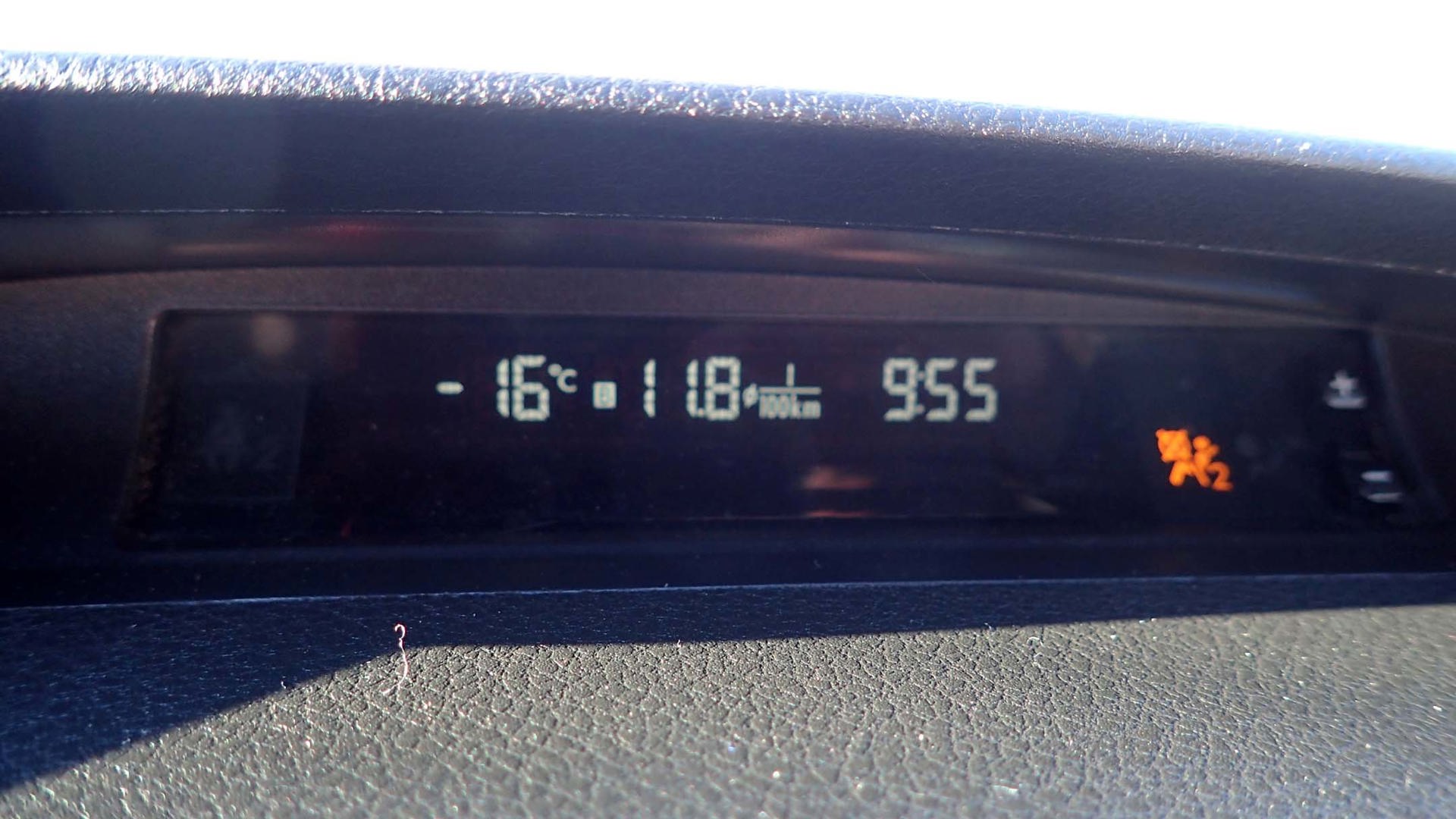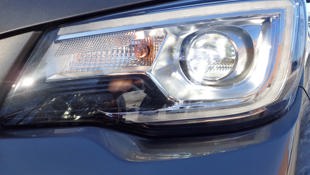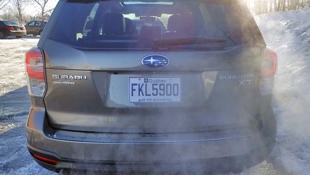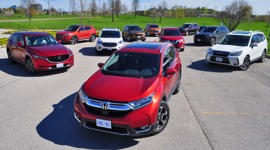Comparison Data
|
2011 Subaru Forester 2.5XT Limited
|
2017 Subaru Forester 2.0XT w/ Technology Package
|
|---|---|
|
Engine Displacement
2.5L
|
2.0L
|
|
Engine Cylinders
4
|
4
|
|
Peak Horsepower
224 hp
|
250 hp
|
|
Peak Torque
226 lb-ft
|
258 lb-ft
|
|
Fuel Economy
13.4/9.7/11.7
|
10.2/8.6/9.5
|
|
Cargo Space
872–1,784 L
|
892–1940 L
|
|
Base Price
$35,495
|
$37,995
|
|
A/C Tax
$100
|
$100
|
|
Destination Fee
$1,495
|
$1,675
|
|
Price as Tested
$37,090
|
$41,270
|
|
Optional Equipment
None
|
$1,500 – Technology Package $1,500
|
Out with the old, in with the new, I’ve always said.
To persuade my wife that replacing Camellia with a younger model is worthwhile, the upgrade to her has to be more so about comfort and convenience than this safety nonsense that I preach.
My wife, on the other hand, handily disagrees. “You can’t just trade in a family member!”
What’s clearly a very technologically complex, but lifeless, machine to me is something more to my better half. Everyone, meet “Camellia”, our 2011 Subaru Forester XT Limited with about 69,000 km on the odometer and painted in a nearly flawless coat of Camellia Red Pearl paint.
“Camellia” was initially leased in March of 2011, and bought out 39 months later by my wife prior to our marriage. Upon saying our vows, and more importantly, paying the government $140.00 + HST for a marriage licence, I inherited a car worth double that of mine, and a cat. The cat, I’m told, will live forever. If my wife, a veterinarian, has her way, so too will Camellia.
But it’s a new year, and 2017 brings this excitable writer plenty of new toys. While the existence of Santa may be debated, I am certain that Subaru Canada has got my back in the form of the “2017 Subaru Forester XT Limited with optional Technology Package”, suggested by the manufacturer to be yours for somewhere around $39,495 (depending on whether or not dealer may sell for less, or more, as the case may be). For reference, our 2011 had an MSRP of $35,495 ($38,070 adjusted for inflation).
Much like you can’t replace Fluffy with a newer, younger version after said pet goes to puppy heaven, no replacement for Camellia will ever carry that name again. Subaru’s got my back again: since Camellia Red Pearl is no longer on offer, Subaru will happily manufacture your new Forester in Venetian Red Pearl.
“Venetia… I like the sound of that!” My dear, beautiful wife… you are not to name our children.
But, before should you think that fleet vehicles are available in any colour that automotive journalists’ desire at any given time on a whim, Subaru was not able to supply a red, XT for this test. Instead we got a fully loaded 2017 Subaru Forester XT in Sepia Bronze Metallic. A colleague of mine and I spent a solid three minutes debating whether it was gold, silver, or some tint of green. I guess we were both wrong.
Whatever the case, it’s a pretty colour, but not the one that my wife would choose.
So why do I want to trade in our 2011? Because I, a lawyer who deals primarily with the ramifications of car accidents on a daily basis, want to see my wife protected as best as possible if she’s to be out driving on those crazy roads. That’s not to say that our 2011 is anything shy of safe – the International Institute of Highway Safety (IIHS) shows a sea of green (in a good way) for all model years of Foresters.
But you see, Subaru introduced something in the 2014 and later Foresters called EyeSight. Such a system provides front collision prevention (automatic braking), adaptive cruise control, lane-departure and sway (lane-keeping) warning, and pre-collision throttle management. Blind-spot monitoring is also on tap, though not as a result of the stereo cameras up front.
To persuade my wife that replacing Camellia with a younger model is worthwhile, the upgrade to her has to be more so about comfort and convenience than this safety nonsense that I preach.
Dropping this bright-eyed, curly-haired woman in front of Camellia and her (yes, Camellia’s) potential replacement, the first thing my wife notes is: “Where’s Camelia’s nostril?!” Referring, of course, to the previous generation’s boy-racer hood scoop that fed the top-mounted intercooler, I show her the hidden ductwork that does the same duty while lowering Camellia’s drag coefficient from 0.38 to Venetia’s 0.33. The lower the number, the more slippery the car is through the air (and therefore, less wind noise and better fuel consumption).
Though my wife quite likes the look of the front end (despite the loss of the hood scoop), she finds the rear tail lights to be more squared off and “manly”. I guess I should just ignore Camellia’s Minnie Mouse glued onto its antenna and a small heart dangling from the rear-view mirror. Luckily, Minnie won’t fit on the new model’s “shark-fin” antenna.
Opening the driver’s side door, the astute of us (not me) notices that the sills are now integrated into the door and therefore will protect her pants from dirt and other winter grime. “I. Love. That!” Looking at my suit pants, my dry-cleaning bill looks to be coming down appreciably with the 2017 model!
Moving inside, my wife immediately notices an airier cabin that, in her opinion, befits a nearly $40,000 automobile. Her giant eyes take in the similar sea of glass that provides superior and unmatched outward visibility, and then quickly notice the new features that our “loaded” (for 2011) Forester lacks: a radio screen that doesn’t pop out or suck, an auto-dimming rearview mirror, a heated steering wheel, dual-zone automatic climate control (set to 28.5°C for her, 19.5°C for me), automatic passenger-side up/down window, illuminated vanity mirrors, and a screen between the tachometer and speedometer. We’d lose our coveted square-shaped cupholders though, which have been perfect for takeout Thai food boxes. Then again, we gain a memory setting for the driver’s seat.
“What’s an X-mode?” It helps keep wheel spin to a minimum in low-traction situations under 40 km/h, though our 2011 has literally never been close to stuck and the feature is therefore not likely to be used by us. Still, nice to know it’s there.
Preparing to take the new car for a ride, I’m asked for a key. I sit there silently until she realizes, “There’s a button!” Yes, push-button start and keyless entry (without relying on the fob) are now available. She asks, “What else do I get?!” Well, upgraded, projection-lens LED headlights (compared to the 2011’s high-intensity discharge xenon multi-reflector units that are just “okay”), a blind-spot monitoring system, a power lift-gate, remote releases to fold the rear seatbacks from within the trunk, and the aforementioned EyeSight.
I need not explain to her that Subaru has replaced the ageing EJ255, the 2.5L turbocharged four-cylinder boxer engine, with the all-new, direct-injected FA20F, a 2.0L twin-scroll turbocharged engine of similar design. A moment of complete pride overwhelms when she announces, “The power’s up to 250 ponies that can pull 258 lb-ft, right?” Who cares that the veterinarian in her refers to power in such a way – she knew the figures! #proud
Right, but the steering is now electric instead of hydraulic and the four-speed automatic transmission is replaced by a continuously variable unit with three drive modes. Expecting disappointment, my wife likes the feeling of the steering, being decidedly easier to operate, and finds the transmission utterly unobtrusive. She also notes that the fuel economy reading is at 10.8 L/100km on the test drive rather than the nearly 15.0 L/100 km Camellia showed on the same route.
“The new version can – though you shouldn't – run on 87-octane fuel with a small higher-end power loss.” She looks at me with one brow raised and says, “You mean I don’t have to hit that fallacious ‘Premium’ button at the local gas station? More money for cat food!!” To be fair, we do spend more on cat food each month than on gas for our cars. Go figure.
The driving experience in the 2017 is much of what we’re used to: this is still a Forester. That’s a good thing, because we clearly love our Camellia. The suspension in this new generation is better, leading to far less float and more control in the twisties, err, suburban driving. On Ottawa’s broken roads, the newfound smoothness was appreciated. As an added bonus, the 2017 is worlds quieter inside at all speeds than its predecessor.
“So, my love, can we upgrade to the 2017 Forester?” I asked this with excitement, only to hear her response:
“Well, I suppose I could get a 2017 Forester and you can trade in your car and drive Camellia – but don’t you dare ever think of getting rid of her.” I was close. So, so close.












